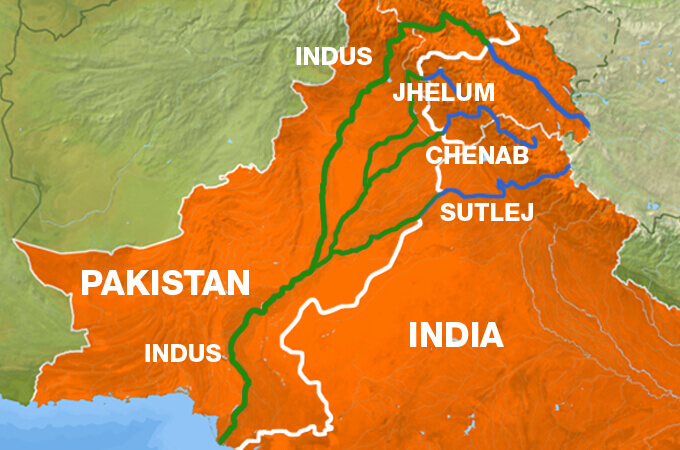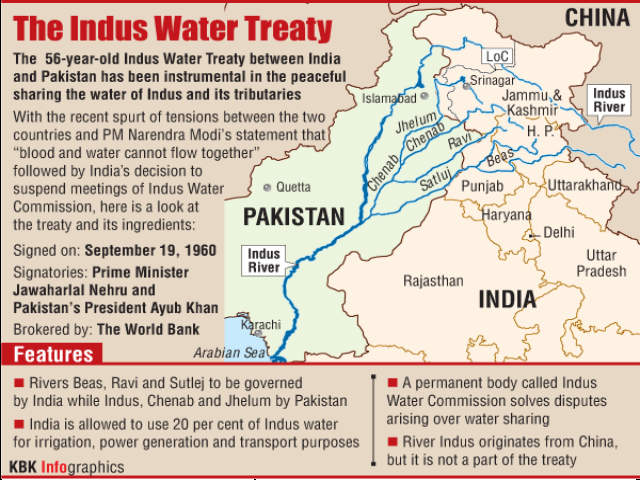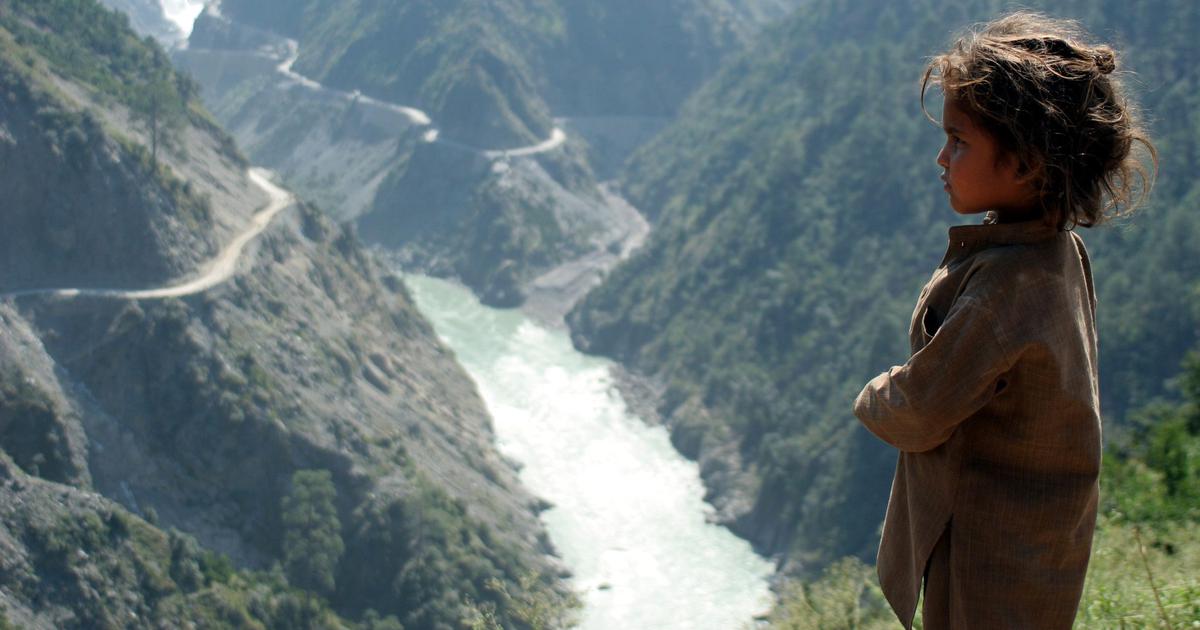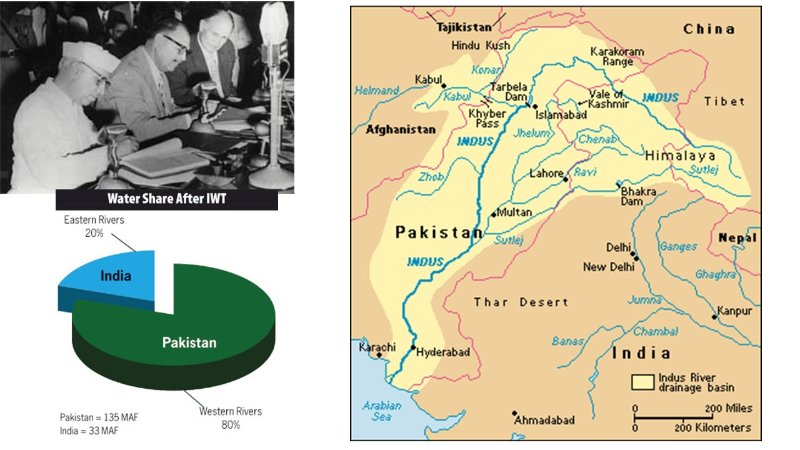Indus Water Treaty between India and Pakistan
Leondaro da Vinci has rightly said “water is the driving force of all nature”. But in 21st century it can be a driving force for wars and conflicts too. Indus Water Treaty is between India and Pakistan; and everything involving India and Pakistan is a serious issue. So, now let’s dive into this treaty because many of the ready may not know about it, the topic is trending after the recent Pulwama attacks and people need to know more about India and Pakistan.

Do you have similar website/ Product?
Show in this page just for only
$2 (for a month)

0/60
0/180
Indus Water Treaty between India and Pakistan 



Leondaro da Vinci has rightly said ?water is the driving force of all nature?. But in 21st century it can be a driving force for wars and conflicts too. Indus Water Treaty is between India and Pakistan; and everything involving India and Pakistan is a serious issue. So, now let?s dive into this treaty because many of the ready may not know about it, the topic is trending after the recent Pulwama attacks and people need to know more about India and Pakistan.

What is the treaty?
In September 1960 Indian Prime minister Jawaharlal Nehru and Pakistani president Ayub khan signed a water sharing agreement concerning the use of water in the Indus river system. The treaty came to be known as Indus water treaty, brokered by the World Bank. The agreement took 9 years of negotiations, under the treaty the control of 6 rivers in the Indus river system was divided equally between the two countries. Internationally it is seen as one of the most successful water sharing arrangements in the world because it has stayed in place despite the two neighbors having been engaged in four wars till date. But between India and Pakistan the treaty has been an apple of discord due to its interpretation and implementation. Since its inception there have been multiple disagreements and differences over the Indus water treaty.

Major Highlights
According to the Indus water treaty, all the water of eastern rivers Sutlej, Beas, and Ravi shall be available for unrestricted use in India.
? India should let unrestricted flow of water from western Jhelum Chenab Indus rivers to Pakistan.
? It doesn?t mean that India can?t use Western River?s water. The treaty says that India can use the water in western rivers in ?non-consumptive? needs. Here non consumptive means we can use it for irrigation, storage and even for electricity production. (But India has not fully utilized this provision so far).
? The treaty allocates 80% of water from the six-river Indus water system to Pakistan. The Indus Commission was set up as a bilateral commission to implement and manage the Treaty.
? The treaty also provides for the funding and building of dams, link canals, barrages and tube wells like the Tarbela dam on the Indus river and the Mangla dam on the Jhelum river . These dams have provided water to Pakistan in the amount it had previously received from the rivers now assigned to India?s exclusive use much of the financing was contributed by the member countries of the World Bank.

The Conflict
The treaty states that no storage or irrigation systems can be built by India on western rivers .This is the basic dissatisfaction from Indian point of view. The treaty lays out under certain exceptional circumstances storage systems can be built. The complaint raised by India is that Pakistan deliberately stops any such effort to built storage system due to its political rivalry with India.
Pakistan fears the threat of drought and famine as it is highly dependent on Indus, Chenab and Jhelum for water supply. These rivers do not originate in Pakistan but flow to the country through India.
Since the treaty?s conception in 1960 the two countries have been involved in the conflicts over a number of projects including Salal project , Tulbul project , Kishanganga and Ratle hydroelectric plants .
The current conflict over Kishanganga Dam project
Kishanganga
Hydropower Project- The project was designed to divert water from the Kishanganga River to a power plant in the Jhelum River basin. Construction on the project began in 2007 and was expected to complete in 2016. In 2010, Pakistan exemplified its strategies when it instituted international arbitration proceedings over India?s 330 Megawatt Hydropower project on a small Indus tributary, the Kishanganga (known as Neelam in Pakistan).
Pakistan persuaded the arbitral tribunal in 2011 to order India to suspend work on the project. With Indian work suspended, Pakistan ramped up construction of its own three-times-larger, Chinese-aided hydropower plant on the same river so as to stake a priority right on river-water use.
In late 2013, the tribunal?s final ruling gave India a setback when it allowed India to resume work on the project but with condition to ensure a minimum flow of 9 cumecs of water for Pakistan. Prescribing such a minimum flow went beyond the treaty?s terms and the laws of nature.

The current arbitration proceedings over the Kishanganga and rattle projects over it are a fresh reminder for India?s unparalleled water generosity which has engendered unending trouble for India.
Present Status
In the wake of URI attack in September 2016 India decided to not hold the meeting of permanent Indus commission so long as Pakistan does not stop funding terror activities.
As India prime minister clearly marked his words ?blood & water can't flow together at the same time'.
As per the International Court of Justice, the treaty may be dissolved by reason of a fundamental change of circumstances. Pakistan?s insisting on rights without responsibilities and its use of state reared terrorist groups can be invoked by India, under Article 62 of the Vienna Convention on the Law of Treaties, as constituting reasonable grounds for withdrawal from the Indus treaty.
If Pakistan wishes to preserve the Indus treaty, despite its diminishing returns for India, it will have to strike a balance between its right to keep utilizing the bulk of the river system?s waters and a corresponding obligation (enshrined in international law) not to cause ?palpable harm? to its co- riparian state by exporting terror.
CONTINUE READING
Indus Water Treaty
What is the Indus Water Treaty
India
Pakistan
Water Sharing by India and Pakistan
Indus Treaty of 1960
Jhelum
Chenab
Beas
Sutluj
Indus
Internet
News
International
Politics
Sandeep Semwal
Content Writer
